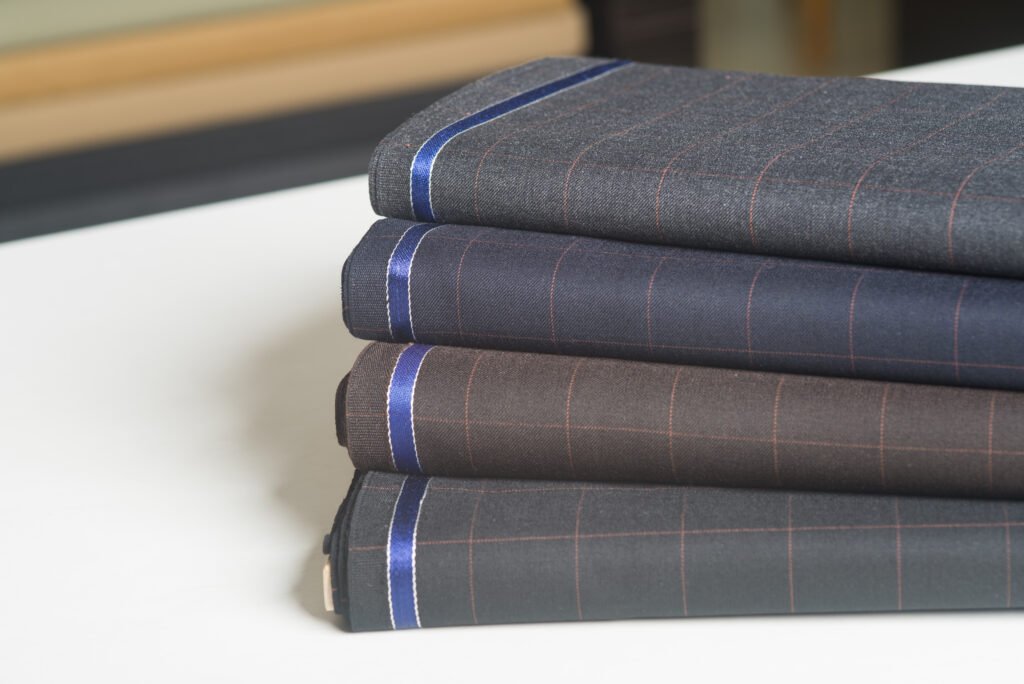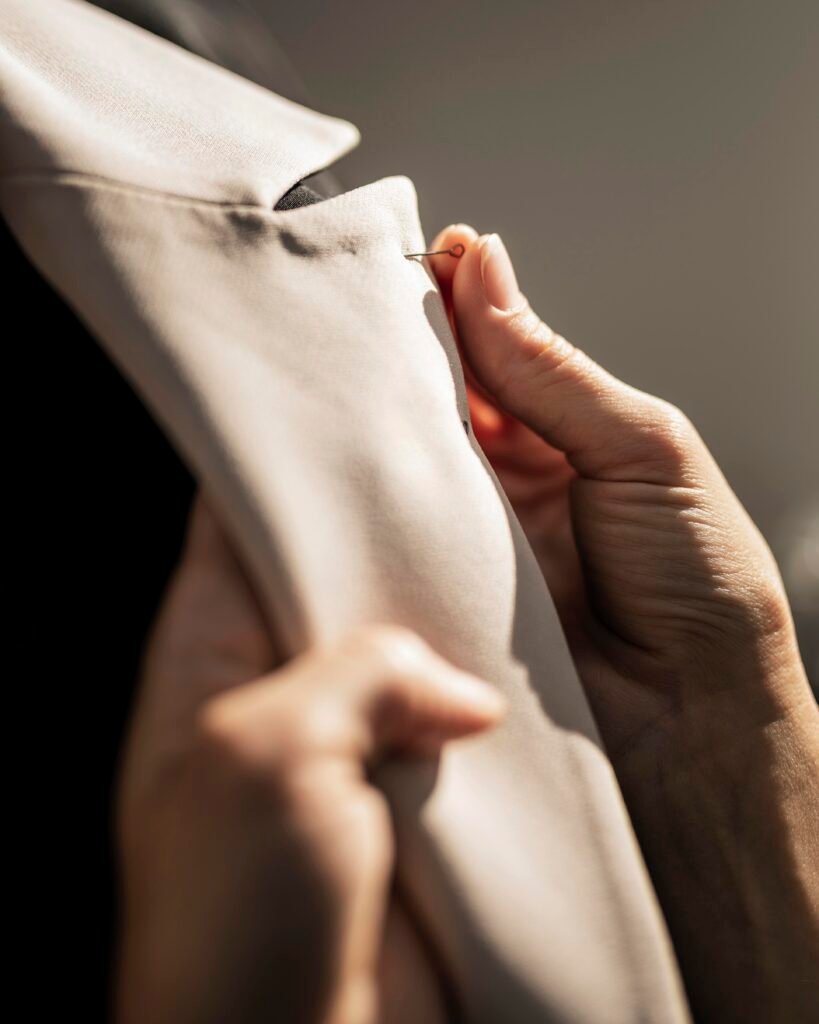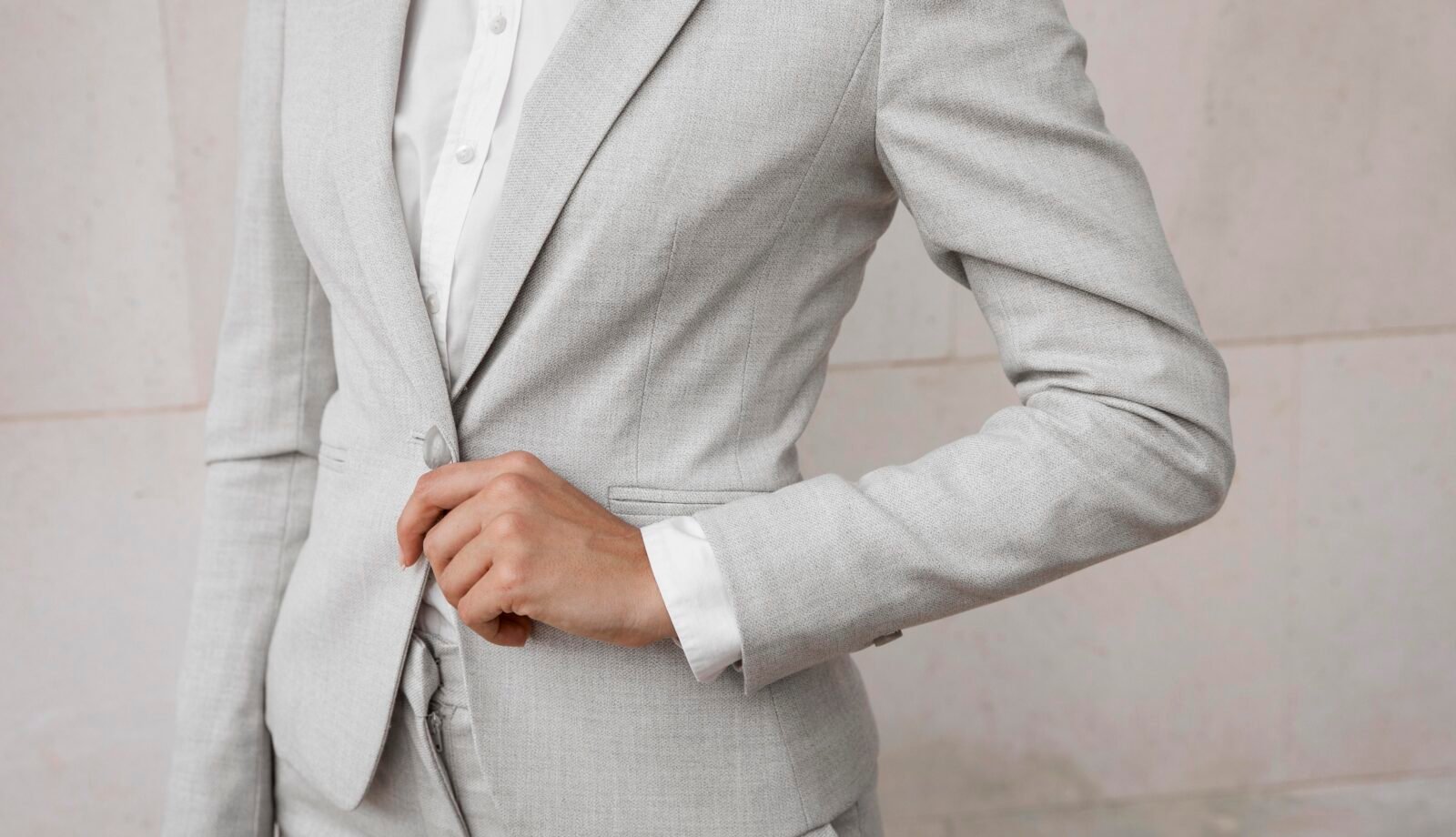Wedding traditions once demanded formal codes regardless of season—heavy wools and structured silhouettes dominated summer ceremonies as much as winter celebrations. Today’s approach recognizes what should have been obvious from the beginning: fabric choice determines everything. Not style. Not color. Not cut. Fabric.

The difference between looking composed throughout a summer celebration and wilting under pressure comes down to breathability. Linen, cotton, and lightweight wools have become the foundation of warm-weather formal wear—materials that understand their purpose. They serve the wearer, not the tradition.
This shift reflects something deeper than fashion preference. Modern grooms are choosing intention over convention. They’re building wardrobes that work with climate, not against it. The most important consideration remains simple: does the fabric serve your comfort and confidence?
Fabric weight tells you everything you need to know about summer suitability. Higher GSM (grams per square meter) measurements indicate heavier materials—exactly what summer ceremonies reject. Light fabrics breathe. Heavy fabrics trap.
Understanding this principle guides every decision that follows.
Understanding Summer Suit Needs
Climate dictates everything else. Summer temperatures don’t negotiate—they expose poor fabric choices within the first hour of celebration. Your comfort determines your confidence, and fabric choice determines your comfort.
Venue context shapes your approach. Country clubs and historical estates expect structured formality. Beach ceremonies and garden settings allow more relaxed interpretations. But the principle remains consistent: respect the setting while serving your needs.
Time of day matters more than most realize. Evening weddings call for polished, darker tones that photograph well under artificial light. Afternoon celebrations permit lighter fabrics and softer colors that work with natural illumination. The venue’s character guides your choice, but the season’s demands come first.
Location details reveal the real requirements. Beach weddings need fabrics that move with ocean breezes—linen excels here. Garden settings demand materials that resist wrinkles from outdoor seating—cotton serves this purpose. Indoor venues with climate control offer more flexibility, but seasonal appropriateness still applies.

Color selection serves both comfort and esthetics. Cream, beige, light gray, and soft blues reflect heat rather than absorb it. These shades keep you cooler throughout extended celebrations and capture beautifully in natural light. Function and form align when you choose thoughtfully.
Your summer suit needs balance three considerations: the occasion’s formality, your physical comfort, and the specific environment’s demands. Understanding these priorities guides every fabric decision that follows.
The Six Fabrics That Understand Summer
Natural fibers don’t chase trends. They solve problems. Summer wedding attire demands materials that work with heat, not against it—fabrics that serve your comfort without sacrificing presence.
Linen remains the standard for good reason. Its open weave creates natural ventilation, allowing heat to escape while fresh air circulates. This flax-derived material wicks moisture away from skin, eliminating the discomfort that ruins long celebrations. Linen wrinkles, yes. But these creases become part of its relaxed sophistication—proof of authenticity in an age of synthetic perfection.
Cotton delivers reliable performance for all-day events. Lightweight yet durable, it maintains structure better than linen while preserving breathability. Cotton suits understand their role: steady service from ceremony through reception without drama or compromise.
Lightweight wool challenges assumptions. Properly woven tropical wool performs remarkably well in summer heat through looser construction designed specifically for warm weather. It maintains wool’s natural wrinkle resistance and elegant drape while rejecting wool’s traditional weight. Smart tailoring applied to summer needs.
Seersucker creates its own ventilation system. The distinctive puckered texture lifts fabric away from skin, generating natural airflow. This cotton material originated in hot climates for precisely this purpose—practical innovation disguised as timeless style.
Wool-linen-silk blends combine the best qualities of each material. Wool provides structure, linen delivers breathability, silk adds subtle refinement. These sophisticated blends excel in humid environments where single materials might falter.
Bamboo offers contemporary luxury with natural performance. Its breathability, moisture regulation, and antibacterial properties create ideal conditions for summer celebrations. The silky texture and subtle shine provide elegance that serves both tradition and innovation.
Each fabric serves a purpose. Choose based on performance, not popularity.

How to Style and Combine Summer Suit Fabrics
Construction details separate thoughtful suiting from mere fabric selection. The lining becomes your invisible ally—unlined or half-lined jackets offer superior breathability when temperatures climb. Half-lined construction provides structure where you need it while allowing ventilation across your back.
Your shirt choice should echo your fabric’s philosophy. Cotton and linen shirts in white, pale blue, or cream create harmony with summer suiting. These materials understand their role: support without competition.
For ties, lightweight becomes essential. Linen or silk with subtle patterns—florals, stripes—add seasonal character without overwhelming your composition. The tie should complement, not dominate.
Summer footwear presents an opportunity to refine your approach. Loafers work exceptionally well with summer suits, especially when paired with no-show socks. Your feet need to breathe as much as your torso.
Color coordination follows a simple principle: lighter leathers complement summer fabrics better than dark options. Tan or caramel tones create visual cohesion with cream, beige, and light gray suits. When balancing textures, consider volume carefully. Pair textured fabrics with smoother, more fitted elements to avoid bulk.
Your accessories should reflect the mood of your chosen fabric. Pocket squares and boutonnières offer precise opportunities to introduce complementary tones or textures. These details complete your summer composition with intention.
The goal remains consistent: every element should serve your comfort while maintaining the formality your occasion demands.
Conclusion
Summer suiting demands a different philosophy than traditional formal wear. Not compromise. Not sacrifice. Intention.
Each fabric serves a specific purpose. Linen embraces its natural wrinkles as evidence of authenticity. Cotton provides reliable structure without fighting the climate. Tropical wool defies assumptions about wool’s limitations. Seersucker creates ventilation through design, not accident. Bamboo offers sustainability without sacrificing luxury. Wool-linen-silk blends deliver sophistication that breathes.
Construction details matter as much as material choice. Half-lined jackets understand summer’s demands. Unlined options go further, prioritizing comfort over convention. These decisions reflect the discipline of purposeful tailoring.
Color becomes function in summer suiting. Light shades reflect heat rather than absorb it. They photograph beautifully in natural light. They complement outdoor venues instead of competing with them.
The right summer suit fabric balances formality with climate reality. Venue characteristics inform your choice. Time of day influences your approach. Personal comfort guides every decision.
Because confidence comes from feeling comfortable. The perfect summer suit allows you to focus on celebrating rather than enduring. It serves your needs, not fashion’s expectations.
This is summer suiting done with intention. Quality that works with season, not against it.

